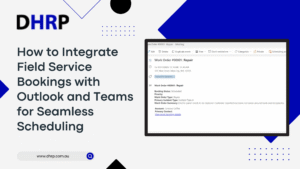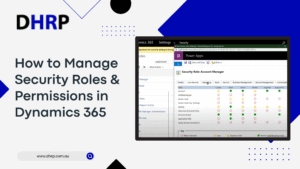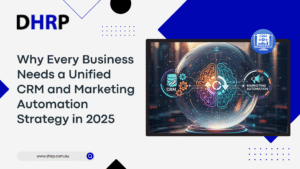Businesses are now outgrowing the legacy CRM systems. Organisations are demanding more proactive systems with AI-powered agents than static and reactive customer systems. Instead of chasing leads and customer, the Agentic CRM systems 2025 help businesses to anticipate their needs and work accordingly through automation.
Cloud-based CRM systems, such as Microsoft Dynamics 365 CRM, are at the heart of this change. This is one of the platforms helping companies in resolving long-standing CRM issues.
So, how is it changing the business approach for many businesses in Australia?
Let’s dive in!
How are Customer Needs Shifting?
Customers today complete their homework. They expect smooth, customised experiences, conduct independent research, and interact through a variety of digital platforms.
Teams that interact with customers, on the other hand, require tools that facilitate their daily tasks rather than cause disruptions. Businesses are struggling to meet these demands using outdated systems.
That’s why many organisations are rethinking their CRM implementation strategies to better support modern expectations. By adopting AI-first CRM technology like Microsoft Dynamics 365, they can reimagine customer engagement and boost productivity.
By creating content, surfacing insights, and summarising customer interactions, embedded Microsoft Copilot capabilities make it easier for salespeople and customer support representatives to do their jobs more efficiently.
What is Agentic AI?
Autonomous, goal-driven agents that can navigate challenging environments make up agentic AI. With the use of APIs, generative AI tools, and closed-loop learning, these agents autonomously make decisions, adjust to feedback, and pursue outcomes, in contrast to traditional AI, which only reacts to commands.
Agentic AI is rapidly being used in a variety of industries, including marketing, customer service, healthcare, and research and development. It increases productivity and gives companies a competitive advantage.
- Traditional CRM: Create a task to send a follow-up.
- Agentic CRM: Follow up. Keep an eye on the reaction. Try a few different channels. Proceed if required.
An agentic CRM’s AI workers act with purpose and context. In addition to recording actions, they assess the status of leads and deals, make decisions in response to shifting circumstances, and take action across systems to accomplish results.
Common CRM System Challenges
Even with the widespread adoption of CRM, many companies still have trouble reaping the benefits of their systems. The following are the most common problems encountered in traditional CRM environments:
1. Disconnected Systems and Data Silos
Many on-premise CRM systems don’t integrate well with commonplace tools like email, analytics, or communication platforms; instead, they work independently.
This gives rise to:
- Inconsistent client information.
- Accessing a unified customer view is challenging.
- Lost time when navigating between systems.
2. Lack of Innovation and AI Integration
Artificial intelligence was not a factor in the development of earlier CRM systems. When AI is adapted into legacy systems, it results in:
- Limited capacity for automation.
- Poor outreach personalisation.
- Lost insights from data on consumer behaviour.
3. High Total Cost of Ownership (TCO)
The costs of many legacy CRM systems are high:
- Fees for licensing.
- IT infrastructure and hardware.
- Continuous upkeep.
- Intricate integrations with third parties.
4. Manual Processes and Reactive Strategies
CRM is still a tool that responds to customer inputs rather than encouraging proactive engagement in the absence of intelligent automation. This results in:
- Delayed follow-ups.
- Lost chances for service improvement or upselling.
- Diminished rivalry in rapidly evolving markets.
5. Fragmented Customer Experiences
The customer journey becomes fragmented when marketing, sales, and support function independently. For instance, marketing might use tone-deaf messaging if they are unaware of a customer’s prior support issues.
Benefits of Agentic AI in CRM
Modern problems require contemporary answers. Agentic CRMs are CRM platforms that have been improved with AI-first, embedded technologies.
These systems transform how companies interact with their clients by acting on their behalf rather than merely offering assistance.
Here are the benefits of Agentic AI in CRM.
1. Unified Customer View and Workflow Automation
A dynamic 360° customer view is produced by agentic AI by combining all customer data from sales, marketing, customer support, and even third-party tools.
How It Works
Data from Power BI, Outlook, and Microsoft Teams is combined into a single platform with Dynamics 365 CRM. This data is used by agentic AI to:
- Update records automatically.
- Assign work.
- Figure out the needs of your customers.
2. Autonomous Sales and Service Agents
AI agents automate multi-step processes like lead qualification, case routing, and email generation.
How It Works
Proactive tools such as Customer Service Copilot, Sales Chat, and Sales Qualification Agent:
- Respond to clients.
- Make suggestions.
- Follow up on assignments.
3. Reduced Costs and Better ROI
When compared to the on-premise CRM cost of system maintenance, agentic CRMs like cloud-based CRMs have a significantly lower price.
How It Works
Platforms such as Dynamics 365 combine features, so expensive third-party plugins are no longer necessary. They make use of current investments in Power Platform, 365, and Azure from Microsoft.
4. Scalable, Cloud-Based Flexibility
Instant updates, real-time AI improvements, and elastic infrastructure are made possible by the best cloud-based CRM.
How It Works
Cloud systems automatically receive AI agent updates, such as the most recent versions of Microsoft Copilot and Sales Agent tools, in contrast to on-premise CRM vs cloud CRM.
Key Proactive CRM Strategies Enabled by Agentic Systems
- Predictive Lead Scoring and Intent Detection: Sales teams respond more quickly when systems identify high-potential clients before they get in touch.
- Automated Workflow Orchestration: Processes such as lead qualification, case routing, and service handoff occur smoothly across departments thanks to automated workflow orchestration.
- Dynamic Journey Orchestration: Marketing campaigns react to real-world cues, such as time zones and customer behaviour, by pausing, continuing, or reentering.
- Customised Copilot Emails and Messages: Tone-sensitive, tailored outreach that automates communication while maintaining brand voice.
Conclusion
The future of CRM systems lies in the intelligent, proactive capabilities of Agentic CRM Systems. As customer expectations grow and business environments evolve, static CRMs are no longer enough.
Agentic CRMs, like Microsoft Dynamics 365, offer automation, scalability, and deep insights that empower teams to deliver smarter engagement. Businesses in Australia and beyond are already experiencing the shift from reactive systems to AI-first solutions.
At DHRP, we help you implement modern CRM strategies with Dynamics 365 to ensure seamless integration, improved customer experiences, and better ROI. Now’s the time to make the switch to an Agentic CRM system with DHRP.
FAQs
An agentic CRM system uses AI-powered agents that autonomously complete tasks, analyse data, and engage customers. Unlike traditional CRMs, it proactively drives actions, improves workflows, and delivers smarter decision-making without waiting for manual input or commands.
AI in 2025 transforms CRM by enabling predictive insights, personalised communication, and autonomous customer engagement. Tools like Microsoft Copilot automate tasks, enhance user productivity, and shift CRM from static data tracking to intelligent, outcome-driven customer relationship management.
Switching to a proactive CRM approach improves customer satisfaction, accelerates sales, and streamlines service. Agentic CRMs anticipate customer needs, automate follow-ups, and reduce missed opportunities—ensuring your team stays ahead in a fast-moving, competitive business environment.



































































































